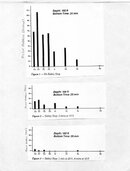- Messages
- 21,306
- Reaction score
- 21,407
- Location
- Philadelphia and Boynton Beach
- # of dives
- 2500 - 4999
http://www.scubaboard.com/forums/technical-diving-specialties/472412-deep-stops-really-worth.html
I have been skeptical of the value of deep stops for recreational diving. This has been a controversial topic on SB with opinions polarized to one opinon or the other. Though the NEDU study is far from the usual recreational dive, I believe the principles apply.
I have been skeptical of the value of deep stops for recreational diving. This has been a controversial topic on SB with opinions polarized to one opinon or the other. Though the NEDU study is far from the usual recreational dive, I believe the principles apply.




